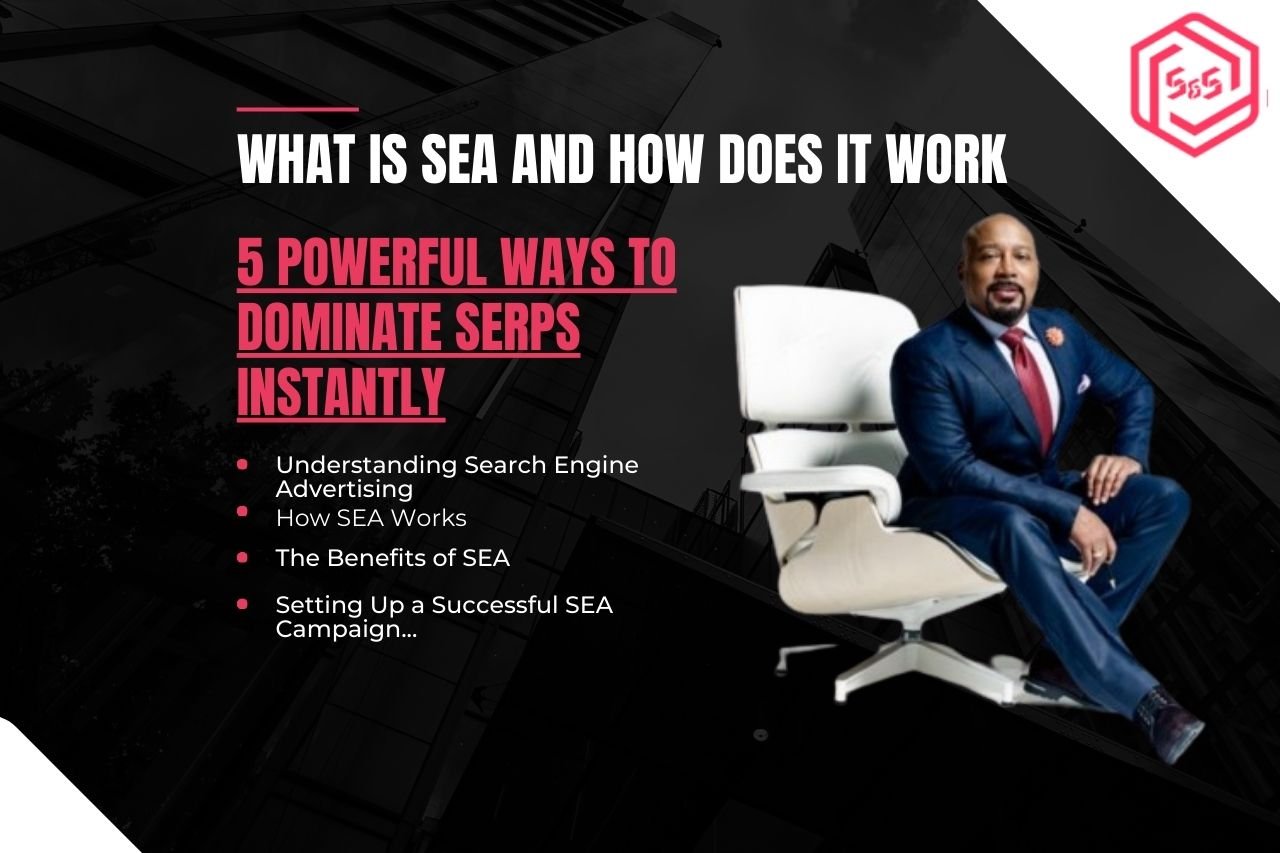Introduction
Search Engine Advertising (SEA) is a powerful digital marketing strategy that allows businesses to place ads on search engine results pages (SERPs). This article will delve into what SEA is, how it works, and why it's an essential tool for driving targeted traffic and boosting online visibility.
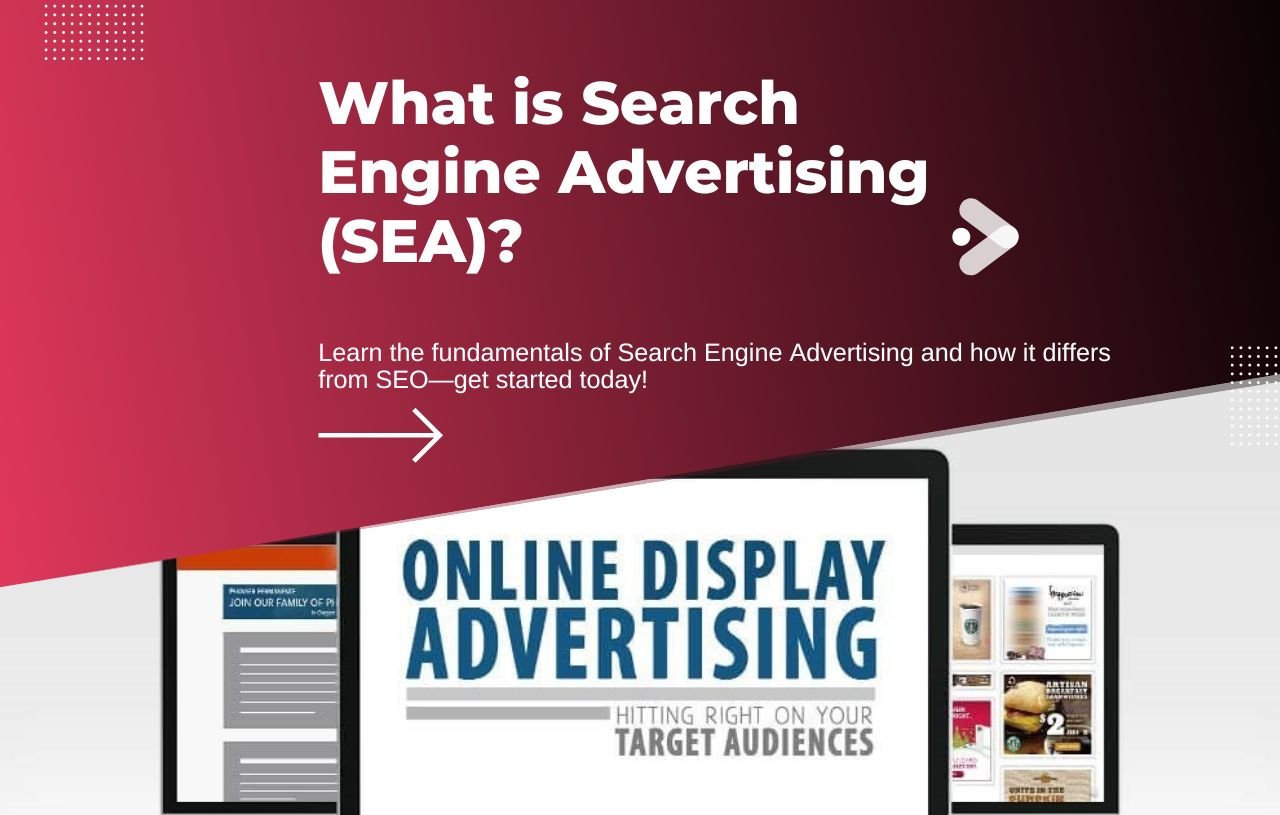
Understanding Search Engine Advertising (SEA)
Definition of SEA
Search Engine Advertising (SEA) is a key component of digital marketing that allows businesses to place paid advertisements directly on search engine results pages (SERPs). Unlike Search Engine Optimization (SEO), which focuses on improving organic rankings through content and website optimization, SEA strategies involves bidding on specific keywords to ensure your ads appear prominently when users search for those terms. These paid ads often appear at the top of the SERPs, marked as "sponsored" or "ad," making them one of the first things users see. This immediate visibility makes SEA a powerful tool for driving targeted traffic to your website, especially when you need quick results.
Types of SEA
There are several types of search engine ads that businesses can use to reach their target audience. The most common are:
Text Ads: These are simple ads consisting of a headline, a short description, and a link to your website. Text ads are typically displayed at the top or bottom of the search results page, making them highly visible to users. They are most effective when the ad copy is clear, concise, and directly related to the user's search query.
Shopping Ads: Also known as Product Listing Ads (PLAs), shopping ads feature product images, prices, and a direct link to the product page on your website. These ads are particularly effective for e-commerce businesses looking to showcase their products directly in search results. They usually appear at the top of the SERPs or in a dedicated shopping section.
Display Ads: Unlike text and shopping ads, display ads appear on the Google Display Network, which includes a vast range of websites across the internet. These ads can include images, videos, and interactive elements, making them ideal for building brand awareness and retargeting campaigns.
Popular platforms like Google Ads and Bing Ads offer robust tools for creating and managing these different types of ads, allowing businesses to reach their target audience effectively across various search engines.
By understanding what SEA is and the types of ads available, businesses can strategically choose the best ad formats to achieve their marketing goals, whether it’s driving immediate traffic, increasing sales, or boosting brand visibility.
How SEA Works
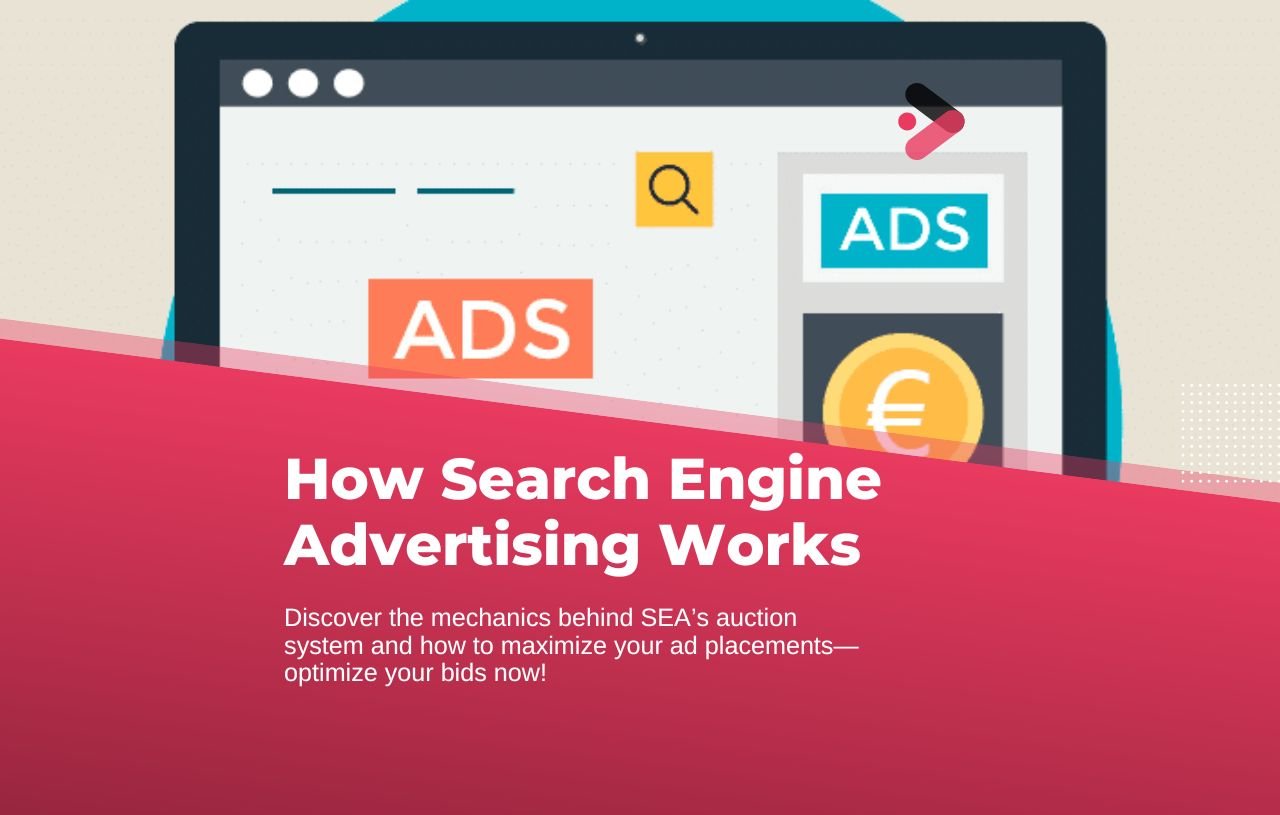
The Auction System
Search Engine Advertising (SEA) operates on an auction-based system where advertisers bid on specific keywords relevant to their business. When a user enters a search query that matches these keywords, an auction takes place behind the scenes. The highest bid doesn’t necessarily win; instead, search engines like Google consider a combination of the bid amount, ad relevance, and the advertiser’s Quality Score to determine which ads appear and in what order. This system ensures that users see the most relevant ads, while advertisers can compete for prime placement without overspending.
Keyword Targeting
The success of any SEA campaign largely depends on effective keyword targeting. Keywords are the terms and phrases users enter into search engines when looking for information, products, or services. By identifying and targeting the right keywords, you ensure that your ads are shown to the most relevant audience. This requires thorough keyword research to understand what potential customers are searching for and how competitive those keywords are.
For instance, a local bakery might target keywords like “best cupcakes in [city name]” or “order birthday cakes online.” These specific, intent-driven keywords help the bakery’s SEA ads reach users who are more likely to convert, making the campaign more efficient and cost-effective.
Ad Rank and Quality Score
Search engines use a metric called Ad Rank to determine the position of ads on the SERPs in Search Engine Advertising. Ad Rank is calculated based on your bid amount, the quality and relevance of your ad (known as Quality Score), and the expected impact of ad extensions and other ad formats. Quality Score, in particular, plays a critical role in this process. It is influenced by factors such as the relevance of your ad to the search query, the quality of your landing page, and the expected click-through rate (CTR).
For example, if two advertisers bid the same amount for a keyword in a SEA campaign, the one with the higher Quality Score will typically win the better ad placement. This emphasizes the importance of not just bidding high, but also ensuring that your ads and landing pages are highly relevant and provide a good user experience.
By understanding how the auction system works, the importance of keyword targeting, and the factors that influence Ad Rank and Quality Score, businesses can create more effective SEA strategies for ads campaigns that maximize their ad spend and achieve better results on the search engines.
The Benefits of Search Engine Advertising: Why Your Business Needs It Now
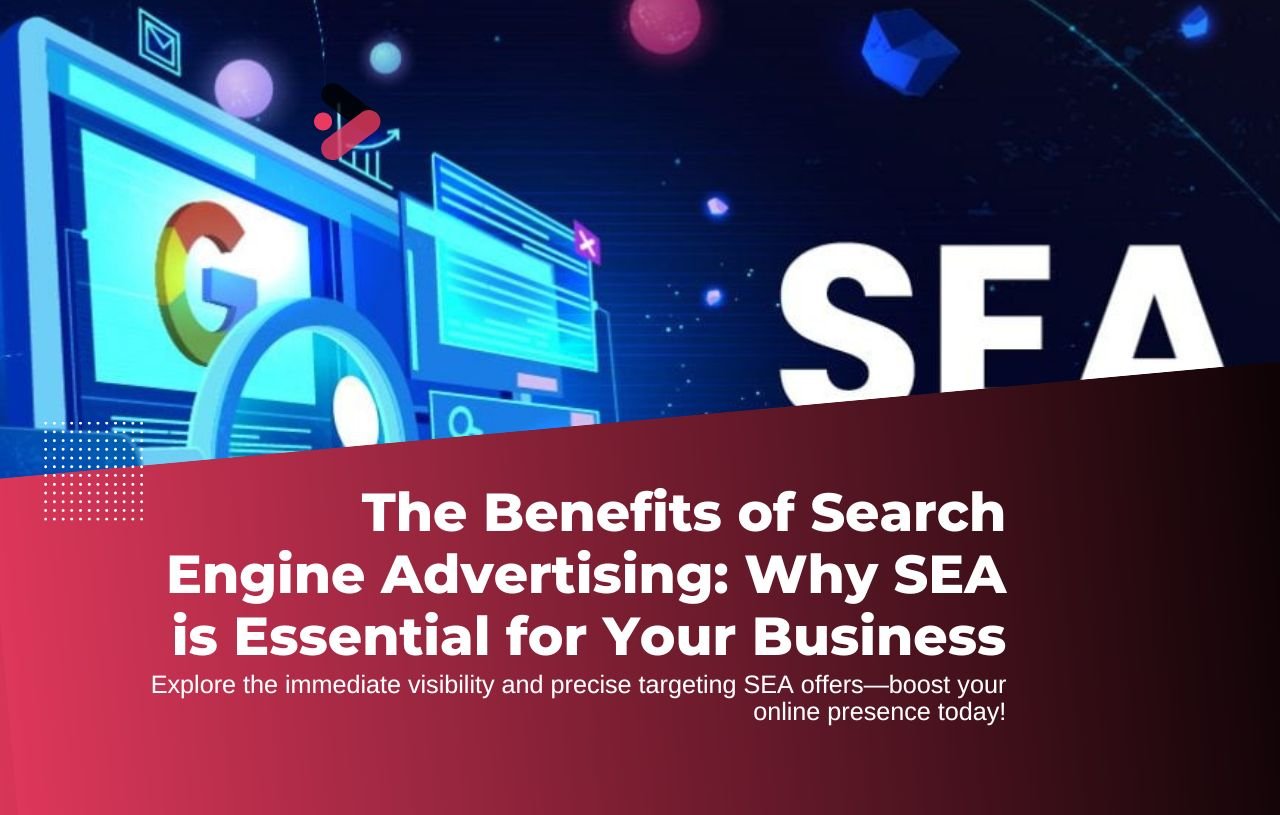
Let’s face it—getting noticed online is tough. Between ever-changing algorithms, fierce competition, and short attention spans, it can feel like shouting into the void. But what if there was a way to cut through the noise and get your business in front of the right people right now?
That’s exactly what Search Engine Advertising (SEA) does.
Whether you're launching something new, running a flash sale, or just trying to grow your brand, SEA gives you the tools to show up where it matters most—at the top of search results. And the best part? You’re in control.
Let’s break down why SEA is one of the smartest investments you can make in your marketing strategy.
Immediate Visibility
One of the most significant advantages of Search Engine Advertising (SEA) is the ability to gain immediate visibility on search engine results pages (SERPs). In today's fast-paced digital landscape, where competition is fierce and consumer attention spans are short, being able to position your brand at the top of search results almost instantly can make a crucial difference. Unlike Search Engine Optimization (SEO), which requires a longer-term investment of time and effort to gradually improve organic rankings, SEA offers a quick and efficient way to achieve top placement on the SERPs.
This immediacy is particularly advantageous in several key scenarios. For businesses launching new products or services, SEA provides an effective means to generate buzz and attract attention right from the start. For example, when a company releases a new tech gadget, they can use SEA to ensure that their ads appear at the top of search results for keywords like “latest smartphone features” or “newest tech gadgets.” This not only drives immediate traffic to their product page but also positions the brand as a leader in innovation.
Similarly, SEA is highly effective for time-sensitive promotions or sales events. Retailers often use SEA during holiday seasons or special sales events, such as Black Friday or Cyber Monday, to capture the attention of shoppers who are actively searching for deals. By bidding on keywords like “Black Friday discounts” or “Cyber Monday deals,” businesses can ensure that their ads are prominently displayed, drawing in customers who are ready to make a purchase.
In highly competitive markets, where multiple businesses vie for the same audience, SEA allows for strategic positioning that can set a brand apart from its competitors. A newly opened restaurant, for example, can use SEA to instantly appear at the top of search results for local queries like “best new restaurant in [city]” or “restaurant grand opening deals.” This not only drives traffic to the restaurant's website or physical location but also helps establish the brand's presence in a crowded marketplace.
Moreover, SEA's ability to provide immediate visibility is essential for businesses looking to capitalize on current trends or viral moments. When a particular topic or event suddenly gains widespread attention, businesses can quickly create and launch Search Engine Advertising campaigns that target related keywords, ensuring they are part of the conversation and can capture the surge in interest.
In summary, the immediate visibility that SEA offers is a powerful tool for businesses looking to quickly and effectively engage with their target audience. Whether it's for a new product launch, a time-sensitive promotion, entering a competitive market, or leveraging a trending topic, SEA enables brands to position themselves at the forefront of search results, driving traffic, and increasing brand awareness from the moment their campaign goes live.
Be Seen Instantly—No Waiting Around
One of the biggest frustrations with digital marketing is how long it can take to see results. SEO is powerful, but it’s a long game. SEA, on the other hand, is like flipping a switch.
With the right campaign, your ad can appear at the top of Google search results within hours—not weeks or months.
Real-World Example:
Imagine you’re launching a new line of skincare products. With SEA, you can target keywords like “best natural face serum” or “vegan skincare for sensitive skin” and have your ad show up the moment someone searches for those terms. That’s instant visibility to people who are already looking for what you offer.
This is especially powerful when:
- You’re launching a new product or service
- You’re running a limited-time promotion
- You want to ride the wave of a trending topic
- You’re entering a competitive market and need to make a splash
👉 Pro Tip: Use SEA to build momentum while your SEO efforts are still gaining traction.
Targeted Advertising
Search Engine Advertising offers unparalleled precision in targeting your audience. With advanced targeting options, businesses can ensure their ads are shown to the right people at the right time. You can target based on demographics (age, gender, income level), geographic location, device type, and even the time of day. Additionally, keyword targeting allows you to reach users who are actively searching for the products or services you offer. For example, an online boutique specializing in sustainable fashion can target users searching for “eco-friendly clothing” or “sustainable fashion brands,” ensuring that their ads are displayed to a highly relevant audience. This level of targeting increases the likelihood of conversions, making your ad spend more efficient and effective.
Reach the Right People at the Right Time
One of the most underrated benefits of SEA is how precise it can be. You’re not just throwing ads into the void—you’re putting them in front of people who are actively searching for what you offer.
You can target based on:
- Location (down to the city or even neighborhood)
- Demographics (age, gender, income level)
- Device type (mobile, desktop, tablet)
- Time of day (when your audience is most active)
- Search intent (via specific keywords)
Real-World Example:
Let’s say you run a boutique that sells eco-friendly fashion. You can target users searching for “sustainable clothing brands” or “ethical fashion for women.” That means your ad is only shown to people who are already interested in what you sell—making every click more valuable.
👉 Pro Tip: Use keyword research tools to find high-intent search terms your ideal customers are already using.
Measurable Results
Another major benefit of Search Engine Advertising is the ability to track and measure the performance of your campaigns in real time. Search Engine Advertising platforms like Google Ads provide detailed analytics, allowing you to monitor key metrics such as click-through rate (CTR), conversion rate, cost-per-click (CPC), and return on ad spend (ROAS). These insights enable businesses to quickly identify what’s working and what isn’t, allowing for continuous optimization of campaigns. For instance, if a particular ad is performing well with a high CTR but has a low conversion rate, you can adjust the landing page to better align with the ad’s message, improving the chances of conversion.
Moreover, the ability to measure ROI accurately helps businesses make data-driven decisions and justify their advertising budgets. This makes SEA a powerful tool for businesses of all sizes, from small startups to large enterprises, looking to maximize their marketing investments.
By leveraging the benefits of immediate visibility, targeted advertising, and measurable results, businesses can use Search Engine Advertising to drive targeted traffic, increase brand awareness, and ultimately achieve their marketing goals more effectively.
Know Exactly What’s Working (and What’s Not)
One of the best things about SEA is how measurable it is. You’re never left guessing whether your campaign is working. Platforms like Google Ads give you real-time data on:
- Click-through rate (CTR)
- Conversion rate
- Cost-per-click (CPC)
- Return on ad spend (ROAS)
This means you can:
- See what’s driving results
- Pause or adjust underperforming ads
- Double down on what’s working
- Optimize your landing pages for better conversions
Real-World Example:
If your ad is getting a lot of clicks but not many sales, that’s a sign your landing page might need tweaking. Maybe the offer isn’t clear, or the page loads too slowly. With SEA, you can spot these issues early and fix them fast.
👉 Pro Tip: Set up conversion tracking to measure not just clicks, but actual sales, sign-ups, or other key actions.
Make the Most of Your Marketing Budget
Whether you’re a startup with a tight budget or a growing business ready to scale, SEA gives you full control over how much you spend and where that money goes.
You can:
- Set daily or monthly budgets
- Adjust bids based on performance
- Pause or restart campaigns anytime
- Focus spending on your highest-performing keywords
This flexibility makes SEA a great fit for businesses of all sizes. And because you’re only paying when someone clicks your ad, every dollar is working harder for you.
👉 Pro Tip: Start small, test different ad variations, and scale up once you find what works.
Setting Up a Successful Search Engine Advertising Campaign
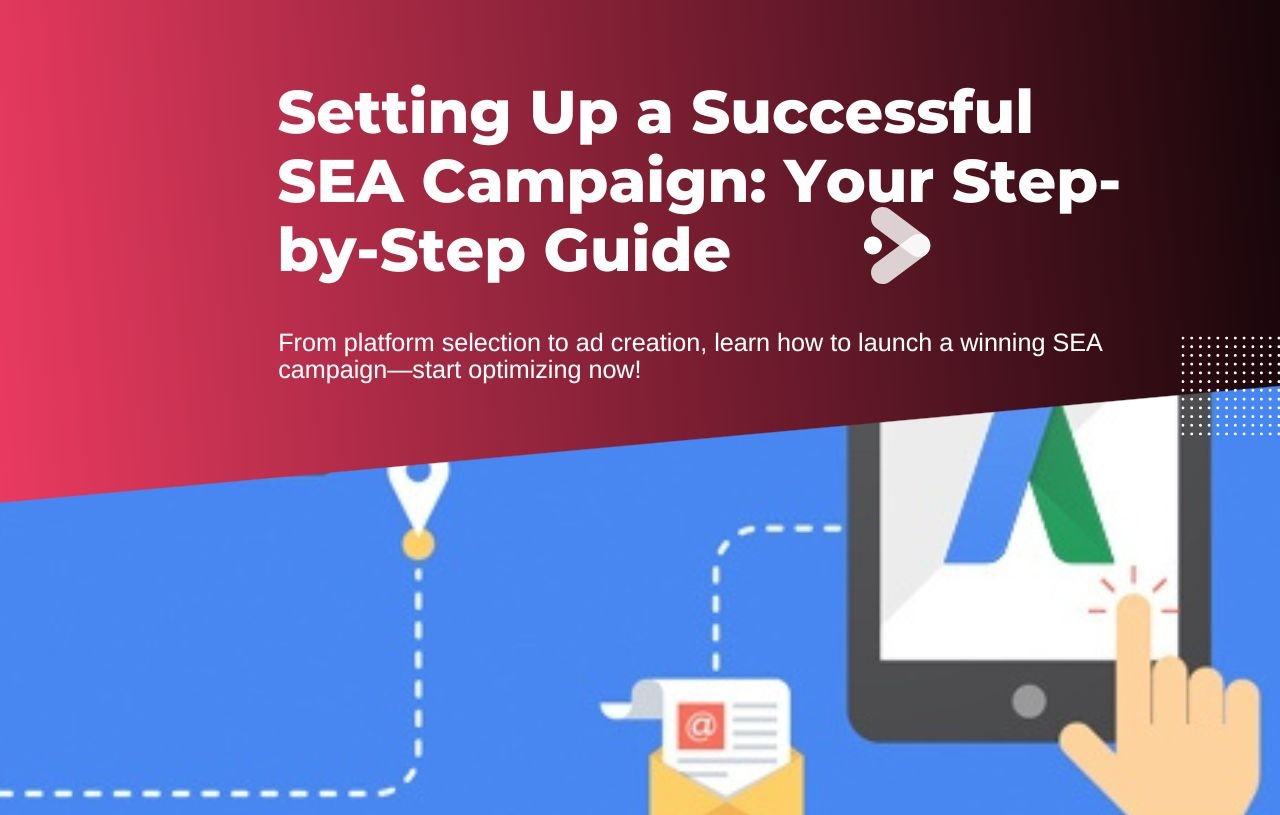
Choosing the Right Platform
The first step in setting up a successful SEA campaign is selecting the right platform for your business. While Google Ads is the most popular and widely used platform, offering access to the vast audience of Google Search and its network, other platforms like Bing Ads can also be valuable, particularly if your target audience includes users who prefer Microsoft’s search engine. Each platform has its own strengths; for example, Google Ads offers extensive reach and advanced features, while Bing Ads can often provide lower competition and cost-per-click (CPC). It’s essential to choose a platform that aligns with your audience and marketing goals.
Creating Effective Ads
Once you’ve chosen your platform, the next step is crafting compelling ads that attract clicks and drive conversions. Effective SEA ads are clear, concise, and tailored to the searcher’s intent. Start with a strong headline that grabs attention and includes your primary keyword. The description should highlight the unique selling points of your product or service and include a clear call-to-action (CTA) that encourages users to take the next step, whether it’s visiting your website, signing up for a newsletter, or making a purchase.
For example, an ad for an online course might have a headline like “Master SEO in 30 Days – Enroll Now!” followed by a description that emphasizes the benefits of the course, such as “Learn from industry experts. Flexible schedule. Limited spots available.” Additionally, using ad extensions—such as sitelinks, call buttons, or location information—can enhance your ad by providing additional ways for users to interact with your business directly from the search results.
Budget Management
Managing your budget effectively is crucial to the success of your Search Engine Advertising campaign. Start by setting a clear budget based on your overall marketing goals and the average cost-per-click (CPC) in your industry. SEA platforms allow you to set daily spending limits, ensuring you don’t exceed your budget while still maximizing your ad visibility. It’s also essential to choose the right bidding strategy—whether it’s manual bidding, where you set individual bids for each keyword, or automated bidding, where the platform adjusts your bids based on your goals, such as maximizing clicks or conversions.
For example, if your goal is to increase website traffic, you might use a bidding strategy that focuses on maximizing clicks. On the other hand, if you’re looking to generate leads, a strategy that maximizes conversions might be more appropriate. Regularly monitor your campaign’s performance and adjust your bids as necessary to optimize your return on investment (ROI).
By carefully selecting the right platform, creating compelling ads, and managing your budget effectively, you can set the foundation for a successful Search Engine Advertising campaign that drives traffic, generates leads, and boosts your online visibility.
Common Mistakes to Avoid in Search Engine Advertising
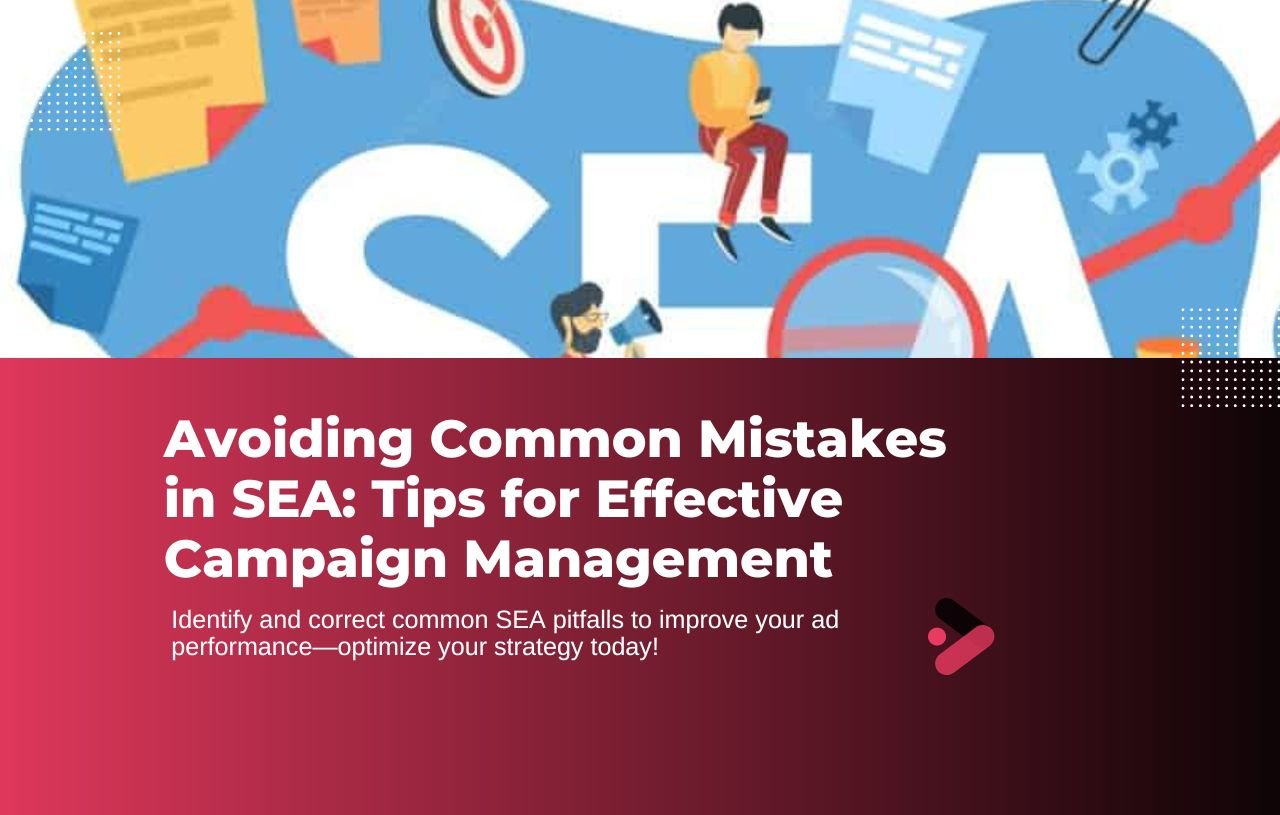
Ignoring Quality Score
One of the most common mistakes in Search Engine Advertising (SEA) is neglecting the importance of Quality Score. Quality Score is a metric used by search engines like Google to evaluate the relevance and quality of your ads, keywords, and landing pages. A higher Quality Score can lead to lower costs per click and better ad placements, while a low Quality Score can significantly reduce your campaign’s effectiveness. Some advertisers focus solely on bidding high to secure top positions, overlooking the fact that even the highest bid can be outperformed by ads with better Quality Scores.
For example, if your ad copy is poorly aligned with the keywords you’re targeting or if your landing page is slow to load and doesn’t provide valuable content, your Quality Score will suffer. To avoid this, ensure that your ads are highly relevant to the search queries you’re targeting, that your landing pages are optimized for speed and user experience, and that your overall campaign is structured to meet the needs and expectations of your audience.
Poor Keyword Selection
Another frequent mistake is choosing the wrong keywords for your Search Engine Advertising campaign. Keywords that are too broad or irrelevant can lead to wasted budget on clicks that don’t convert into valuable actions, such as sales or leads. For instance, if you’re running an ad for a niche product like organic pet food, targeting a broad keyword like “pet food” might attract a lot of clicks, but many of those clicks may come from users looking for cheaper or non-organic options, leading to low conversion rates.
To avoid this, conduct thorough keyword research to identify specific, intent-driven keywords that match your target audience’s search behavior. Use tools like Google Keyword Planner to find relevant keywords with the right balance of search volume and competition. Additionally, regularly review your keyword performance and refine your list by adding negative keywords to filter out irrelevant traffic, ensuring your budget is spent on the most qualified leads.
Neglecting Campaign Optimization
One of the most detrimental mistakes in SEA is setting up a campaign and then leaving it on autopilot. Without regular monitoring and optimization, even the best-planned campaigns can lose effectiveness over time. Factors such as changing market conditions, shifts in consumer behavior, and updates to search engine algorithms can all impact your campaign’s performance.
To avoid this, make a habit of regularly reviewing key metrics such as click-through rates (CTR), conversion rates, and return on ad spend (ROAS). Use this data to identify areas for improvement, such as underperforming keywords, ad copy that isn’t resonating, or landing pages that need optimization. Implement A/B testing to experiment with different ad variations and find the most effective combinations. By continuously optimizing your SEA campaigns, you can adapt to changes and maintain strong performance over time.
By avoiding these common mistakes—ignoring Quality Score, choosing poor keywords, and neglecting campaign optimization—you can enhance the effectiveness of your Search Engine Advertising efforts, maximize your budget, and achieve better results in your Search Engine Advertising campaigns.
Conclusion: Mastering Search Engine Advertising for Success
Search Engine Advertising is a powerful tool for driving targeted traffic, increasing visibility, and achieving quick results in the competitive digital landscape. By understanding the fundamentals of SEA, from its definition and the types of ads available to how it works, businesses can leverage this advertising method to reach their ideal audience effectively. Setting up a successful SEA campaign involves choosing the right platform, creating compelling ads, and managing your budget wisely to maximize your return on investment.
However, to truly excel in Search Engine Advertising, it’s essential to avoid common pitfalls such as neglecting Quality Score, selecting the wrong keywords, and failing to continuously optimize your campaigns. By focusing on relevance, targeting, and ongoing improvements, you can ensure that your SEA efforts not only meet your immediate marketing goals but also contribute to long-term success.
Incorporating these strategies will help you navigate the complexities of Search Engine Advertising, allowing you to drive more qualified leads, enhance your online presence, and ultimately grow your business in the ever-evolving digital marketplace.

